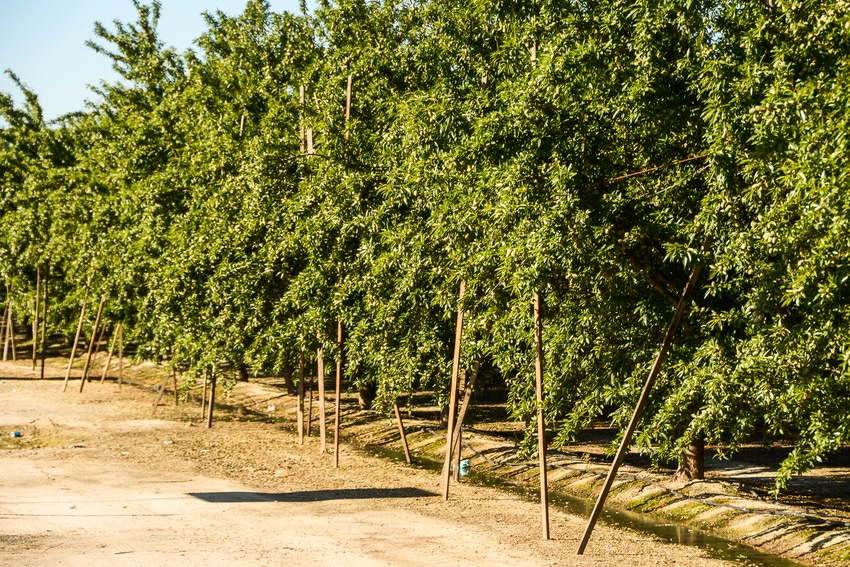
California almond farmers could shake a record 2.25 billion pounds of nuts from their trees late this summer if U.S. Department of Agriculture figures hold out.
This would be more than 5 percent above 2016 receipts of 2.134 billion pounds and 2.3 percent better than the subjective estimate of 2.2 billion pounds issued in May.
The latest objective estimate of almonds from the National Agricultural Statistics Survey (NASS) comes via its annual survey which this year looked at trees in 852 orchards spanning one million bearing acres from Red Bluff to Bakersfield.
Average nut set is estimated lower at 7.2 percent from last year at just over 5,700 almonds per tree. Nonpareil variety nut set is up about 2.4 percent over the previous year at nearly the same number of almonds per tree, numbers that surprised some.
Paul Ewing with RPAC, an almond processor and handler in Los Banos, Calif., says the average nut set per tree at 7 percent lower than last year is the lowest in recent history.
Kernel weight in those Nonpareil nuts is about 3 percent heavier than last year, according to the USDA survey, with overall kernel weight of all varieties sampled 6.1 percent higher than last year. This was also a surprise as Ewing said expectations seemed to bear a smaller Nonpareil nut than the current survey suggests.
NASS found Nonpareil kernel sizes the largest since 2010.
“This estimate seems neutral or potentially bullish for the market,” Ewing wrote in a company statement published online shortly after the USDA report release.
Mike Mason, chairman of the Almond Board of California (ABC) and a Kern County grower and partner in Supreme Almonds of California near Wasco, says the estimate is a good one given previous ABC projections and the recent penny increase in the almond assessment.
At about 5 percent above the previous year’s production, this gives the ABC an opportunity to build new markets and keep demand ahead of supply – something the Almond Board has done as production continues to increase. The Almond Board expects production to continue rising to about 2.5 billion pounds in the next few years as more trees enter commercial production.
Mason would like to see a slower, steady rise in production to give the industry an opportunity to build sustainable markets, “which was the sole purpose of the assessment increase,” he said.
Estimates like the most recent one should help create stability in the markets, Mason says.
Daniel Bays, a Stanislaus County almond grower with about 700 acres planted near Westley, Calif., says the almond report figures closely reflect what he sees in his orchards and his area this season.
Bays characterizes the nut set in his orchards as “pretty good,” saying there were some challenging bee flight hours during the almond bloom period in late February.
He also says mite and Navel orangeworm issues this year are not as severe as in previous years. He suspects wet weather and less water-stressed trees may have held back mite populations.
Michael Kelley, president and chief executive officer of the Central California Almond Growers Association, says the huller and sheller cooperative budgeted this year for 111 million pounds of throughput, a figure that will be about six million pounds short of the NASS estimates, if growers in his area produce the amount the almond forecast suggests.
Kelley says this could extend his hulling and shelling season out beyond 100 days, something he says the cooperative can handle.
Across the board, growers and Kelley say harvest timing should be closer to normal this year after several years of drought-induced impacts that led to an earlier harvest.
Donny Hicks, a field representative with Hughson Nut Company says his hull split sprays are being timed about 7-10 days behind last year.
The 2017 California Almond Objective Measurement Report is available online at http://tinyurl.com/y8kj6qgw.
About the Author(s)
You May Also Like






